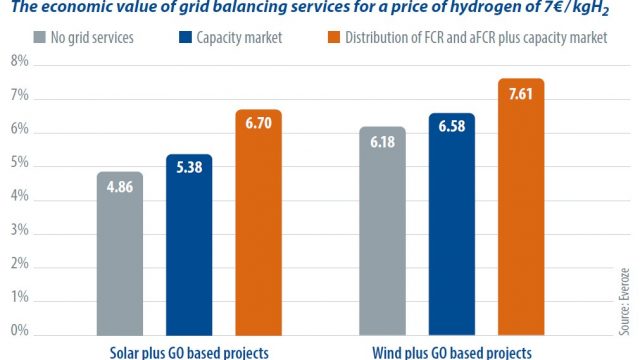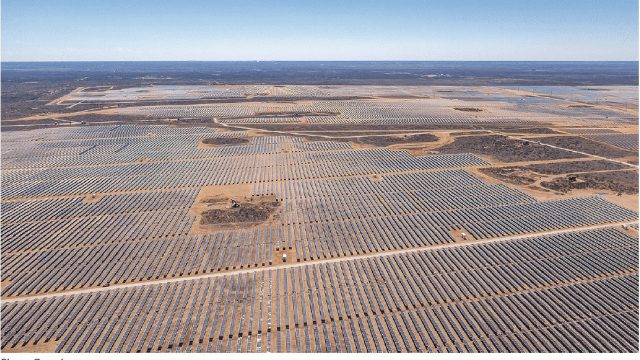Do longer durations mean less Li-ion?
As published in PV Magazine February 2023
Long-duration energy storage (LDES) systems, generally defined as storing eight or more hours of energy, are widely expected to be necessary to reach energy transition goals. Flexible forms of fossil fuel energy, such as gas peaking plants, are currently used to manage the intermittent peaks and troughs of renewable energy generation. However, these will need to be replaced with a zero-carbon alternative. Everoze partner David Thomason investigates the alternatives to lithium-ion batteries that may provide long-duration services.
Energy storage requires the conversion of electricity to either mechanical, thermal or chemical energy. Batteries, a chemical option, are currently preferred in most applications. But various alternatives are out there, and for projects requiring durations of eight hours or more, in particular, several could mount a challenge to Li-ion’s throne.
Let’s first cover mechanical storage. The most developed form is pumped hydro energy storage (PHES) with up to 9,000 GWh deployed globally, according to the International Hydropower Association. The cost is relatively low, capacity does not degrade over time and once initial works have been done the cost of refurbishment is a fraction of the initial capital investment. This means PHES projects have long lifetimes; the Cruachan power station in Scotland is 58 years old and still operating. Despite these benefits, PHES is not going to replace Li-ion anytime soon for one simple reason: geography. There are a limited number of feasible sites, and these do not always line up with the need for energy storage.

Compressed Air Energy Storage (CAES) offers another alternative. This technology has been around for a long time, having been initially deployed in 1978 in Germany. While early attempts required gas, the latest generation involves storing heat generated in compression to increase the system efficiency and run without burning gas. Although deployment in the West has been limited to date, the Chinese Academy of Sciences claims to have installed a 100 MW/400 MWh system with over 60% efficiency. CAES has the potential to pro- vide cheap, emissions-free LDES. But similar to PHES, it is generally constrained by geography and geology. The assumption of cheap energy storage from CAES is underpinned by the availability of salt caverns or other useful geological features. If these have to be made artificially, the cost increases significantly.
Gravity storage has received a lot of attention in the past few years, with Energy Vault securing hundreds of mil- lions of dollars in investments. Despite the significant interest, it is challenging to see how a gravitational storage system can provide meaningful quantities of LDES at grid scale. Storing 100 MWh of energy, an amount which is achievable with a field of Li-ion batteries, would require 365,000 tons, or the weight of the Empire State Building, to be lifted 100 meters in the air.
Heat up
Thermal energy storage is appealing in its simplicity, as rocks (or another heat- storing material) can be heated to use the energy later. These systems rely on existing equipment supply chains and cheap storage materials. However, thermal energy storage is limited by the efficiency of transforming heat back into electricity. Pushing the round-trip efficiency above 50% is challenging. The economics of thermal energy storage are likely to be more appealing in use cases where the stored heat can be used as heat, instead of relying on the low-efficiency process of converting heat back into electricity.
Cool down
Liquid air energy storage (LAES) involves cryogenically liquefying ambient air then evaporating and expanding the air through a turbine to produce power. The levels of energy density this technology can achieve are comparable to redox flow batteries, but the efficiency is limited by similar thermodynamic challenges to the thermal systems mentioned above. Although studies claim high efficiencies are possible, these have proven difficult to demonstrate in practice.
If liquid air is too cold, what about liquid CO2? Decarbonizing the energy system with a CO2 battery has a poetic appeal to it. The gas is liquefied and stored in pressurised tanks, then the pressure is released through a turbine to generate power. This is similar to a LAES system, except it does not require cryogenic temperatures as liquefaction can be achieved at ambient temperatures by increasing the pressure. As the system cannot use ambient air, the CO2 must be contained in a closed loop. This means storing large amounts of CO2 at ambient pressure, which is possible with relatively cheap materials, however it requires a huge volume. The size of the ambient CO2 storage is likely to be one of the biggest challenges.
Back to chemistry
Most alternative battery chemistries face similar challenges to Li-ion for LDES, except flow batteries which have a much lower marginal cost of storage. Compared to PHES or CAES, they offer storage without geographical constraints and significantly higher energy densities, theoretically up to 100 Wh/L. However, this is still less than half the energy density of Li-ion.
The challenge for flow batteries is that the systems have many moving parts and require complex engineering on top of electrical system management, which brings more potential points of failure. This also limits the overall system efficiency due to the required auxiliary loads and thermal management. Furthermore, the most well-developed chemistries, such as vanadium flow batteries, may not be the most competitive as the materials used are expensive. Flow batteries may be able to secure a place in the market in the coming decade, but the dominant chemistry is not yet clear.
There are parallels between solar and Li-ion batteries. Li-ion has experienced a rapid reduction in cost, from its early days in high value electronics, to now being rolled out across multiple industries, including electric vehicles and grid scale energy storage. This cost reduction has made new applications possible: PV now competes with solar thermal for water heating, and Li-ion batteries can compete with LDES technologies for eight-hour storage projects.
For most LDES technologies, a similar cost reduction pathway is not possible. The economics only work at large-scale, therefore investors or governments will need to take on the significant cost of a large scale LDES project in order to prove the technology. And that requires someone to take the risk.






